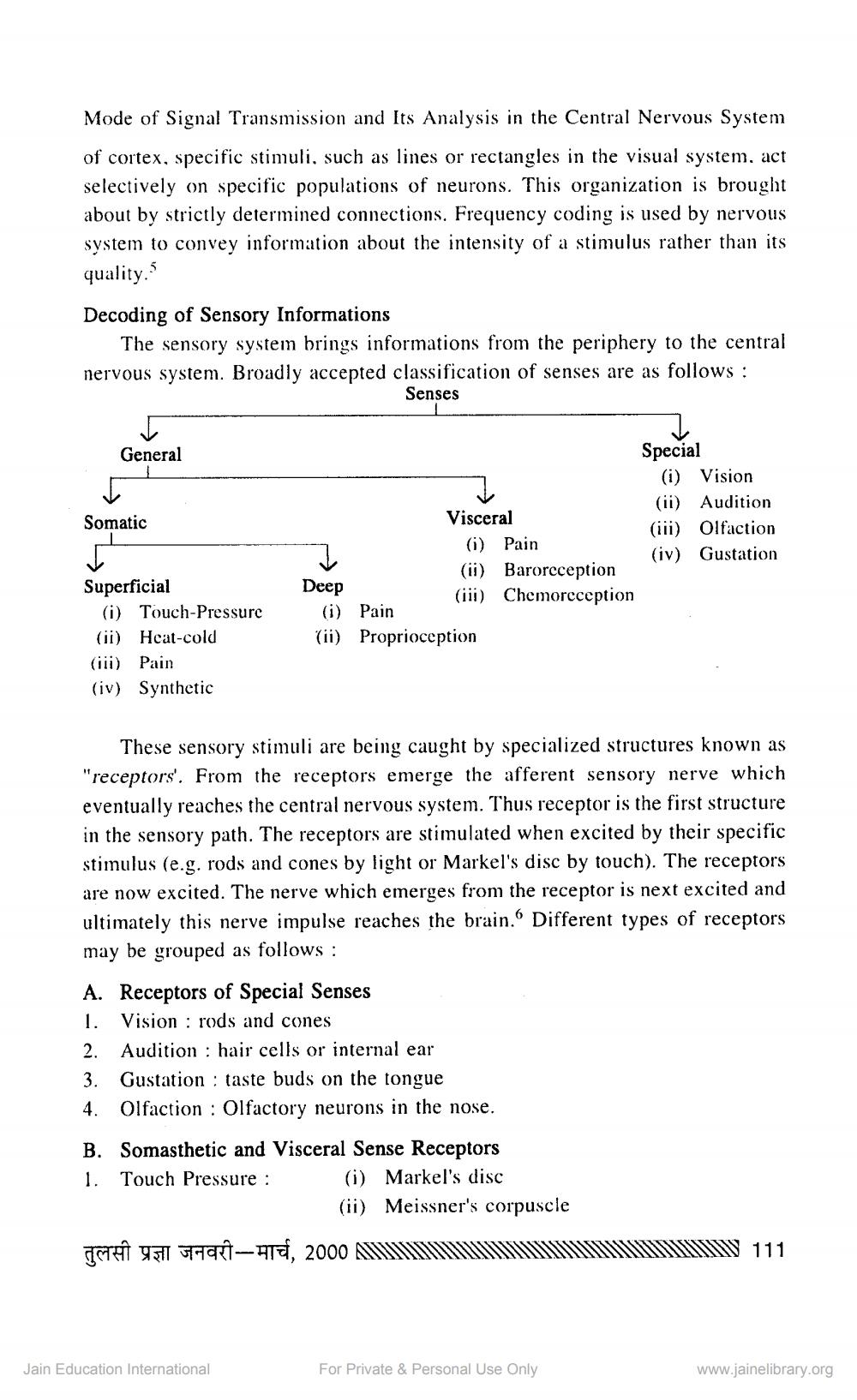________________
Mode of Signal Transmission and Its Analysis in the Central Nervous System
of cortex, specific stimuli, such as lines or rectangles in the visual system, act selectively on specific populations of neurons. This organization is brought about by strictly determined connections. Frequency coding is used by nervous system to convey information about the intensity of a stimulus rather than its quality Decoding of Sensory Informations
The sensory system brings informations from the periphery to the central nervous system. Broadly accepted classification of senses are as follows :
Senses
General
Somatic
Special
(i) Vision
(ii) Audition Visceral
(iii) Olfaction (i) Pain
(iv) Gustation (ii) Baroreception
(iii) Chemoreception (i) Pain (ii) Proprioception
Deep
Superficial
(i) Touch-Pressure (ii) Heat-cold (iii) Pain (iv) Synthetic
These sensory stimuli are being caught by specialized structures known as "receptors'. From the receptors emerge the afferent sensory nerve which eventually reaches the central nervous system. Thus receptor is the first structure in the sensory path. The receptors are stimulated when excited by their specific stimulus (e.g. rods and cones by light or Markel's disc by touch). The receptors are now excited. The nerve which emerges from the receptor is next excited and ultimately this nerve impulse reaches the brain. Different types of receptors may be grouped as follows:
A. Receptors of Special Senses 1. Vision : rods and cones 2. Audition : hair cells or internal ear 3. Gustation : taste buds on the tongue 4. Olfaction : Olfactory neurons in the nose. B. Somasthetic and Visceral Sense Receptors 1. Touch Pressure : (i) Markel's disc
(ii) Meissner's corpuscle
ISTEW Y511 972-973f, 2000 AM
N 111
Jain Education International
For Private & Personal Use Only
www.jainelibrary.org




